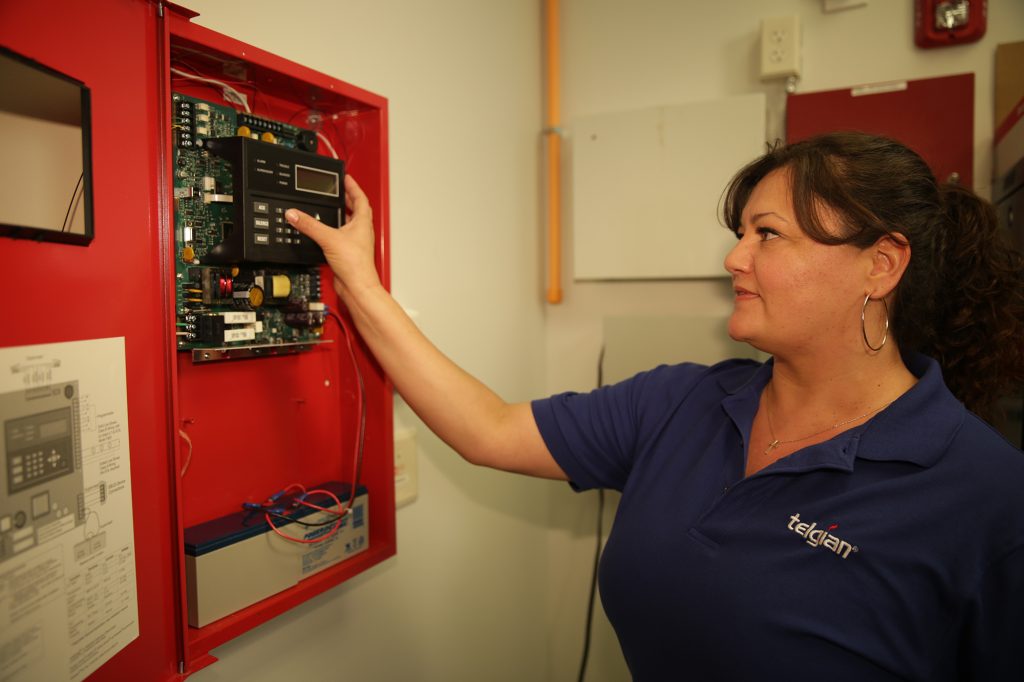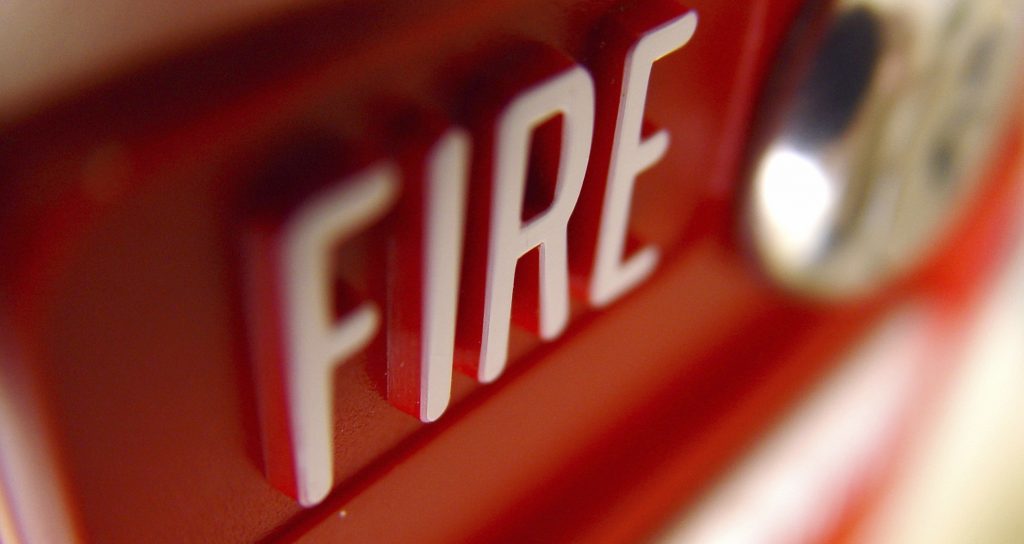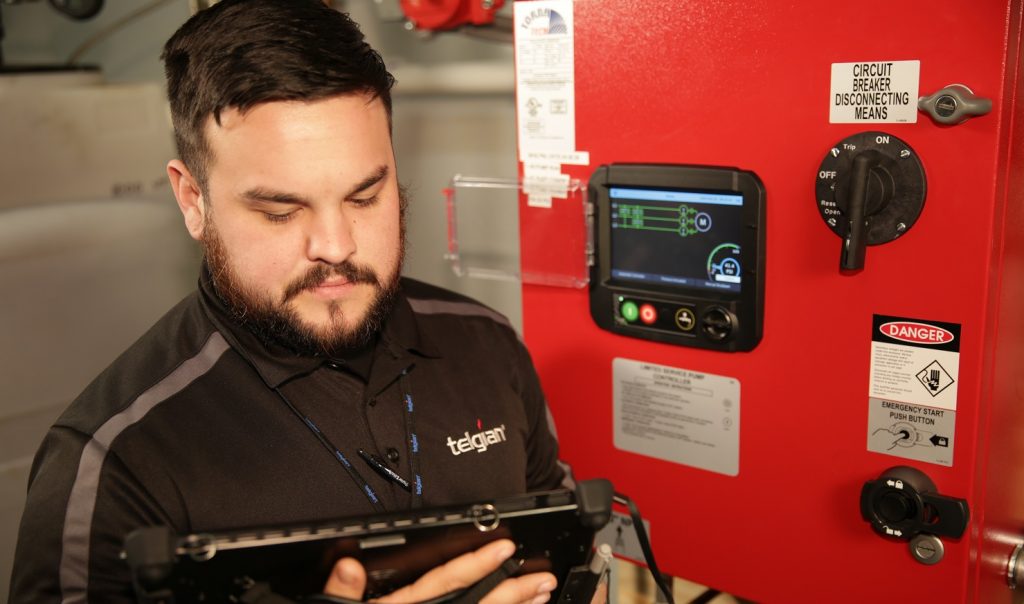
Two national standards provide the requirements for keeping fire and life safety systems operable. NFPA 25 contains the requirements and recommended practices for maintaining water-based fire protection systems while NFPA 72 contains the requirements and recommended practices for maintaining fire alarms and signaling systems. It is important for those charged with protecting business assets to understand how these standards are used. On the surface, it seems logical that the purpose and methodology for the inspection, testing, and maintenance (ITM) of water-based suppression and fire alarm systems would be closely aligned. The differences between the two documents, however, are significant and important to understand when making decisions regarding how your systems will be maintained. Failure to understand the differences can lead to unintended negative consequences.
Although, NFPA 25 and NFPA 72 both contain ITM requirements, NFPA 72 is a document that covers the “application, installation, location, [and] performance,” of alarm systems along with “testing, and maintenance.”[1] NFPA 72 devotes a single chapter to inspection, testing, and maintenance and this chapter covers both initial, reacceptance, and periodic inspections and tests. On the other hand, NFPA 25 is dedicated solely to the periodic ITM of water-based suppression systems. As a result, NFPA 25 goes into much greater detail regarding issues such as the system owner’s responsibilities, descriptions of tasks, and corrective actions that must be taken for deficiencies. With this foundation, let’s review some of the ways ITM is the same and different between the two standards.
NFPA 25 and NFPA 72: The Scope of Fire Protection Systems Inspections
NFPA 25 and 72 differ fundamentally in how each approaches the scope of system inspections. For example, NFPA 25 addresses the “operating condition” of fire protection systems and specifically states that it “does not require the inspector to verify the adequacy of the design of the system.”[2] NFPA 72, however, has no such directive and does not restrict inspections and tests to verifying the operating condition of a system or component. To the contrary, Table 14.3.1 directs that “all equipment is annually inspected to ensure that there are no changes that affect equipment performance and to inspect for items such as building modifications, occupancy changes, and device location.”
NFPA 25 is not totally silent regarding design issues, as it requires the owner to have the system evaluated before making any changes to the building including its occupancy, use, or the materials stored. The annex however, explains that when the inspections are contracted to a qualified inspection provider or contractor, it is not the responsibility of the inspector or contractor to determine if any changes have been made or the subsequent evaluation of the fire protection system.[3] This difference in scope between the two standards is important to understand when “purchasing” ITM services for your fire suppression and fire alarm systems. Unless requested, vendors providing ITM for your water-based protection systems only verify the operational status of the system and do not validate or certify that system will protect building or its contents.
NFPA 25 and NFPA 72: Background and Purpose
NFPA 25 and NFPA 72 have distinctly different purpose statements, which helps explain why the documents are the same yet different. NFPA 72 states its purpose in objective terms that include defining the “means” of signals, the “levels” of performance,” and the “reliability” of the various types of alarm systems along with establishing the minimum levels of performance, redundancy, and quality of installation.[4] Regarding ITM activities, NFPA 72 states the purpose for periodic inspections is to “assure that obvious damages or changes that might affect the system operability are visually identified”[5] and to “statistically assure operational reliability.”[6]
The purpose of NFPA 25 is much more subjective in its tone. It describes its purpose as providing “requirements that ensure a reasonable [italics added] degree of protection for life and property from fire through minimum inspection, testing, and maintenance methods for water-based systems.”[7] NFPA 25 is written with a great deal of consideration towards the costs of ITM and the lowered risk that results from following its requirements.
There is also a practical reason behind the difference. Alarm systems designs and installation are much more straightforward than suppression systems. Once a system is in place, there are relatively few things that can have a negative impact on its operation and performance as long as it is maintained. In addition, most modern systems are addressable and self-monitor their status and operating condition. However, suppression systems are subject to numerous issues that can affect their performance, including changes as divergent as water supplies, building use, storage commodities and arrangement, and building environmental conditions.
An example of how the difference between the purposes of the two standards affects their application can be seen in the difference between the inspection of sprinklers and alarm devices. NFPA 25 permits sprinklers to be inspected from the floor level and sprinklers that are located in concealed spaces, such as above suspended ceilings are exempt from inspection.[8] NFPA 72 has no such limitations or exemptions regarding the inspection of alarm systems or associated equipment. In fact, for the most part, the method of inspection is the same for both the initial acceptance and periodic inspections.[9]
Accurate Reporting and Record Keeping are Essential for Maintaining Fire Protection Systems
NFPA 25 and 72 are the same in that both require records to be kept of all ITM activities. The requirements for the retention of the records are very similar. Both require records to be retained for one year after the next scheduled activity, although the only activity NFPA 72 specifies is testing.[10] However, the requirements for the records themselves are different.
NFPA 25 has no required reporting format or forms. Annex B gives guidance on how reporting should be organized and provides information regarding where sample forms can be found. On the other hand, NFPA 72 has very specific requirements regarding reporting format. Records of all ITM activities must either be completed on the forms found in Chapter 7 or provide the minimum required content as found on those forms.[11]
Qualifications: ITM Experts
NFPA 25 and 72 use the same definition for the term “qualified.” NFPA 25, however, does not elaborate on the definition, leaving it much more subjective in its application. A major reason behind this is that it is assumed that many of the inspections required by NFPA 25 can and will be performed by non-technical individuals such as the property owner or the owner’s personnel. This assumption is based on the fact that many of the inspections required by NFPA 25 are significantly more frequent than those required by NFPA 72. Virtually all fire alarm inspections and tests are performed annually or semiannually while systems covered by NFPA 25 have many daily, weekly, and monthly inspections and tests.
Therefore, to keep the costs of ITM reasonable for suppression systems, it is expected that many lower skilled tasks will be performed by non-technical individuals. An excellent example is the weekly or monthly inspection of system control valves. It is assumed that a business or property owner have competent individuals who can be trained to perform this task along with other similar types of inspections.
However, NFPA 72 goes into much more specific qualifications by segmenting personnel into categories of activity. It has specific requirements for the qualifications for inspection personnel, testing personnel, and service personnel. The requirements graduate, with inspection personnel having the least amount of training to service personnel having the highest level of knowledge and training, with all qualifications being subject to the approval of the AHJ.
Maintaining Fire Protection and Fire Alarm Systems: Summary
Fire protection and alarm systems are not just set it and forget it items. They must be maintained after their initial installation and commissioning. The responsibility for the maintenance is the responsibility of the owner or their designated representative. Keeping these systems functional and performing as intended is a critical component of any risk management program. A basic understanding of the differences between the two national standards for system ITM is a key component to ensuring that we are buying exactly what is needed in the most cost-efficient manner. As the old saying goes, “We don’t know what we don’t know.” Do not make unsupported assumptions. Telgian Engineering & Consulting can assist you in designing a maintenance program that is compliant and efficient. Do not operate with the mistaken notion that an inspection (or test) is simply an inspection (or test) regardless of whether it is for a water-based fire protection system or an alarm system. Nothing could be further from the truth. And, the failure to recognize the difference can very well be the difference between a successful risk program and a failure.
About the Author

In addition to serving on the Board of Directors for NFPA, he is the organization’s 2nd-Vice Chair. He is also the Chair of the NFPA 13 Technical Committee for Fire Sprinkler System Discharge Criteria, a Principal Member of the NFPA Technical Committee for Installation and a Principal Member of NFPA 3, 4, and 25.
Leavitt conducts training seminars and webinars both nationally and internationally on a variety of fire and life safety related subjects. He has also authored numerous industry articles, such as Maintaining Fire Protection and Fire Alarm Systems, as well as training materials including the American Fire Sprinkler Association (AFSA) Beginning Inspector Training Program and the AFSA Online Hydraulics Training Program. As well, Leavitt is a major contributor to several NFPA Handbooks and has served as the subject matter expert for numerous NFPA live and online training programs.
Maintaining Fire Protection and Fire Alarm Systems Author Media and Interview Inquiries:
Susan McNeill
Telgian Holdings, Inc.
smcneill@telgian.com
480-621-5031

